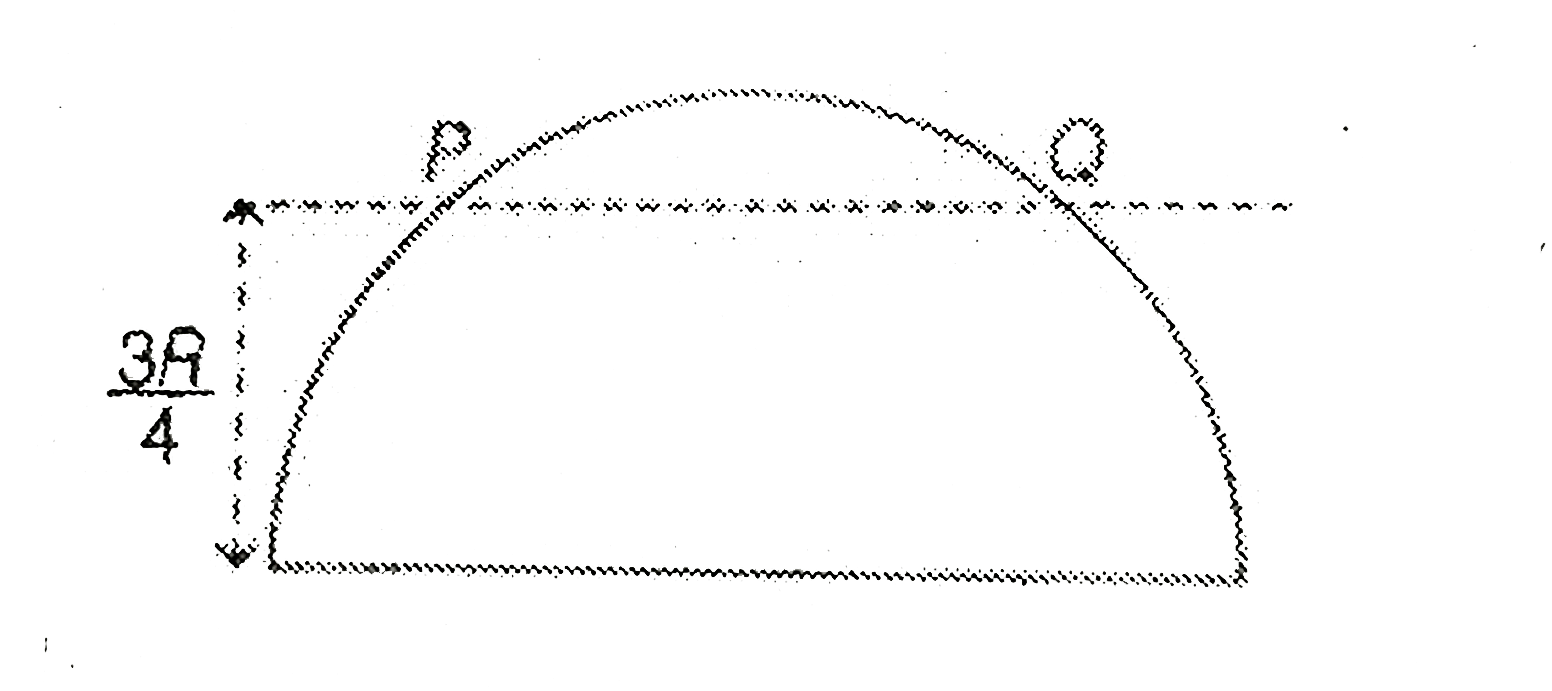The radius of gyration of a solid sphere of radius R about a certain axis is also equal to R. If r is the distance between the axis and the centre of the sphere, then r is equal to
R
0.5R
The correct Answer is:C
To solve the problem, we need to find the distance r between the axis and the center of the solid sphere, given that the radius of gyration k about that axis is equal to the radius R of the sphere.
1. Understanding the Radius of Gyration:
The radius of gyration k is defined as:
k=√IM
where I is the moment of inertia and M is the mass of the object.
2. Moment of Inertia of the Sphere:
The moment of inertia I of a solid sphere about its own center is given by:
IC=25MR2
3. Using the Parallel Axis Theorem:
When the axis of rotation is not through the center of mass, we can use the parallel axis theorem:
I=IC+Mr2
where r is the distance from the center of the sphere to the new axis.
4. Substituting Values:
Substituting the moment of inertia of the sphere into the equation:
I=25MR2+Mr2
5. Calculating the Radius of Gyration:
Since k=R, we can set up the equation:
R=√IM=√25MR2+Mr2M
Simplifying this gives:
R=√25R2+r2
6. Squaring Both Sides:
Squaring both sides to eliminate the square root:
R2=25R2+r2
7. Rearranging the Equation:
Rearranging the equation to isolate r2:
r2=R2−25R2
r2=(1−25)R2
r2=35R2
8. Finding r:
Taking the square root of both sides gives:
r=√35R
Final Answer:
Thus, the distance r between the axis and the center of the sphere is:
r=√0.6R
The radius of gyration k is defined as:
k=√IM
where I is the moment of inertia and M is the mass of the object.
The moment of inertia I of a solid sphere about its own center is given by:
IC=25MR2
When the axis of rotation is not through the center of mass, we can use the parallel axis theorem:
I=IC+Mr2
where r is the distance from the center of the sphere to the new axis.
Substituting the moment of inertia of the sphere into the equation:
I=25MR2+Mr2
Since k=R, we can set up the equation:
R=√IM=√25MR2+Mr2M
Simplifying this gives:
R=√25R2+r2
Squaring both sides to eliminate the square root:
R2=25R2+r2
Rearranging the equation to isolate r2:
r2=R2−25R2
r2=(1−25)R2
r2=35R2
Taking the square root of both sides gives:
r=√35R
Thus, the distance r between the axis and the center of the sphere is:
r=√0.6R
Topper's Solved these Questions
Similar Questions
The radius of gyration of a solid sphere of radius R about its tangent is
View SolutionThe radius of gyration of a hollow sphere of radius R about an axis along its tangent is
View SolutionThe radius of gyration of a solid shapere of radius r about a certain axis is r. The distance of this axis from the centre of the shpere is
View SolutionFind the radius of gyration of a hollow uniform sphere of radius R about its tangent.
View SolutionThe radius of gyration of a uniform solid sphere of radius R., about an axis passing through a point R2 away from the centre of the sphere is:
View SolutionThe radius of gyration of a solid hemisphere of mass M and radius Rn about an axis parallel to the diameter at a distance 34R is given by (centre of mass of the hemisphere lies at a height 3R/8 from the base.)
 View Solution
View SolutionThe radius of gyration of a uniform circular ring of radius R, about an axis which is a chord of circle of length √3R is ,
View SolutionThe radius of gyration of a uniform circular ring of radius R, about an axis which is a chord of circle of length √3R is ,
View SolutionThe radius of gyration of a uniform disc of radius R, about an axis passing through a point R2 away from the centre of disc, and perpendicular to the plane of disc is:
View SolutionThe radius of gyration of a uniform disc of radius R, about an axis passing through a point R2 away from the centre of disc, and perpendicular to the plane of disc is:
View Solution

